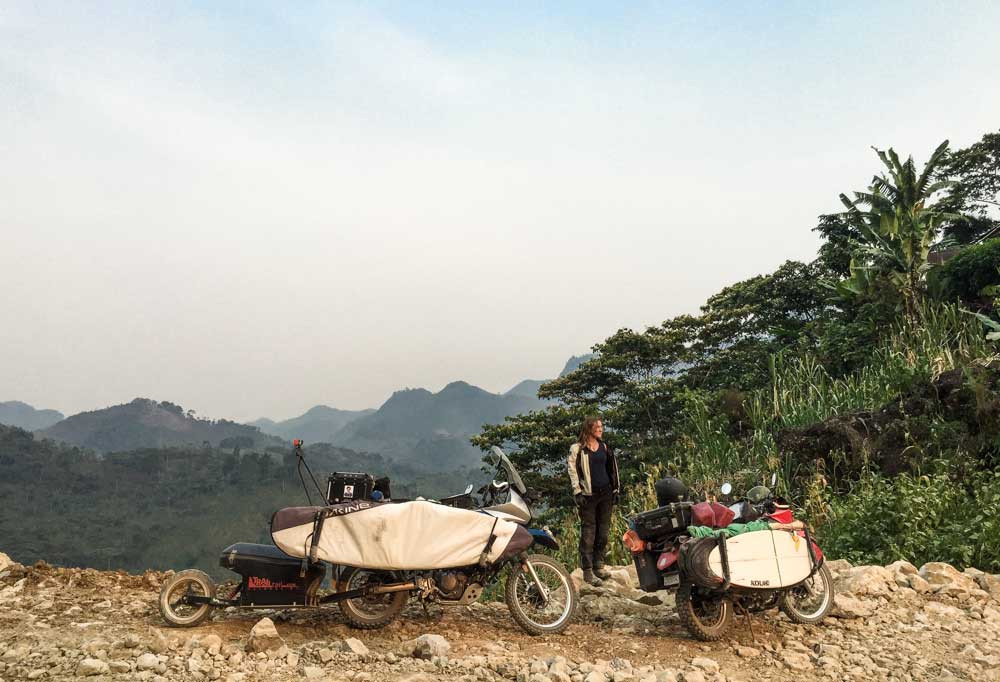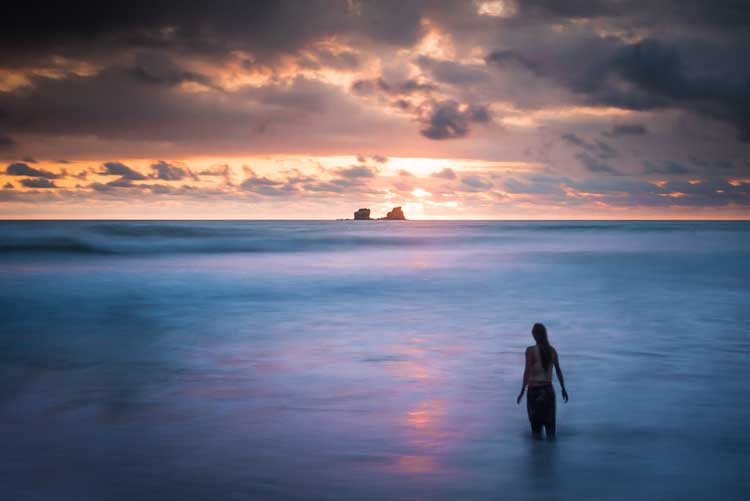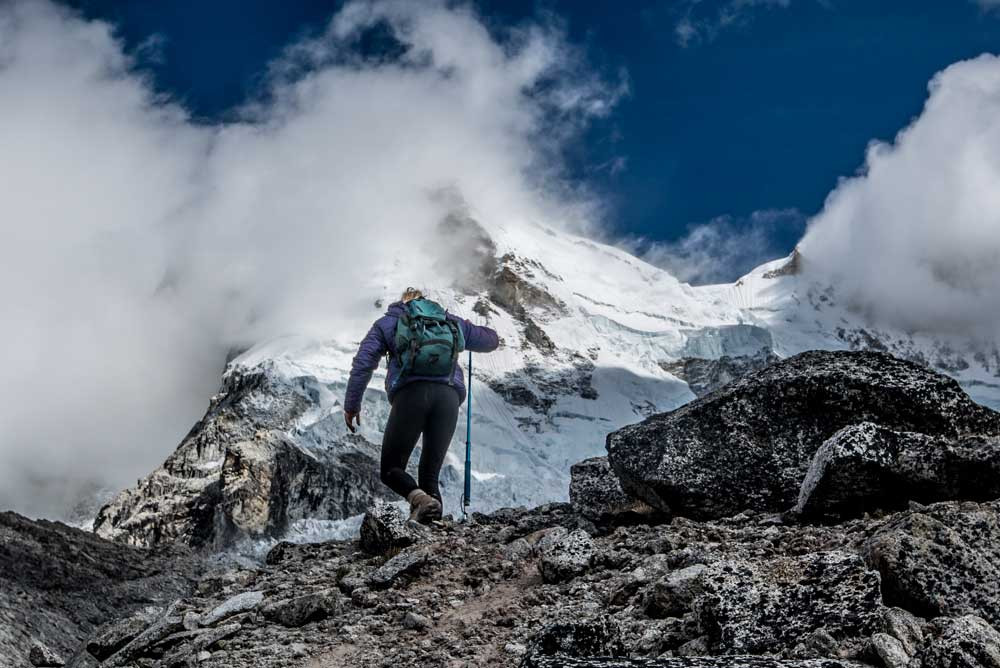Is Argentina Bigger Than Mexico? Yes, Argentina is bigger than Mexico. At gaymexico.net, we understand the importance of accurate and engaging information for LGBTQ+ travelers planning their adventures. Let’s dive into the details of these two vibrant countries, highlighting key aspects for our community, ensuring a better experience.
1. What Are the Exact Land Sizes of Argentina and Mexico?
Argentina covers approximately 2.78 million square kilometers (1.07 million square miles), making it the second-largest country in South America and the eighth-largest in the world. Mexico, on the other hand, spans about 1.97 million square kilometers (0.76 million square miles), ranking it as the 13th-largest country globally. Therefore, Argentina is significantly larger than Mexico in terms of land area.
2. How Does the Size Difference Impact Geography and Climate?
The significant size difference between Argentina and Mexico leads to diverse geographical features and climates. Argentina boasts a wide range of landscapes, from the Andes Mountains in the west to the fertile plains of the Pampas in the center, and the icy glaciers of Patagonia in the south. This results in varied climates, including subtropical in the north, temperate in the central regions, and cold in the south. Mexico’s geography includes deserts, rainforests, high plateaus, and coastal plains, leading to climates ranging from tropical to desert.
3. What Are the Population Sizes of Argentina and Mexico?
Mexico has a significantly larger population than Argentina. As of 2024, Mexico’s population is estimated to be around 129 million people, making it one of the most populous countries in the world. Argentina’s population is approximately 46 million, considerably smaller than Mexico’s.
4. How Do Population Densities Compare Between Argentina and Mexico?
Argentina has a lower population density compared to Mexico. With a population of around 46 million and a land area of 2.78 million square kilometers, Argentina has a population density of about 16 people per square kilometer. Mexico, with approximately 129 million people and a land area of 1.97 million square kilometers, has a population density of about 65 people per square kilometer. This indicates that Mexico is more densely populated than Argentina.
5. Which Country Offers More Diverse Travel Experiences?
Both Argentina and Mexico offer diverse travel experiences, each with its unique appeal. Argentina is renowned for its stunning natural landscapes, including Patagonia, Iguazu Falls, and the Andes Mountains, as well as its vibrant cities like Buenos Aires. Mexico is famous for its rich cultural history, ancient ruins like Chichen Itza and Teotihuacan, beautiful beaches in Cancun and Playa del Carmen, and culinary delights. The choice depends on personal preferences: Argentina for nature and dramatic landscapes, and Mexico for culture and history.
6. What Are Some Popular Destinations in Argentina for LGBTQ+ Travelers?
Argentina has several popular destinations for LGBTQ+ travelers, particularly in Buenos Aires, which is known for its progressive attitudes and vibrant gay scene.
6.1 Buenos Aires
Buenos Aires is the most LGBTQ+-friendly city in Argentina, boasting a lively gay scene with numerous bars, clubs, and cultural events. The Palermo and San Telmo neighborhoods are particularly popular.
6.2 Mendoza
Mendoza, famous for its wine region, offers a relaxed atmosphere and stunning landscapes, making it a great destination for LGBTQ+ travelers interested in wine tourism and outdoor activities.
6.3 Bariloche
Bariloche, located in the Andes, is known for its beautiful lakes and mountains. It’s a great spot for hiking, skiing, and enjoying the natural beauty of Patagonia.
6.4 Cordoba
Córdoba, a historical city with a large student population, offers a vibrant cultural scene and a welcoming atmosphere for LGBTQ+ travelers.
7. Which Cities in Mexico Are Considered LGBTQ+ Friendly?
Mexico has several cities known for their LGBTQ+ friendliness. Here are some of the most popular:
7.1 Puerto Vallarta
Puerto Vallarta is known as the “gay beach capital” of Mexico. It features a vibrant LGBTQ+ scene with numerous gay bars, clubs, resorts, and beaches. The Zona Romantica is the heart of the gay district.
7.2 Mexico City
Mexico City offers a rich cultural experience with a thriving LGBTQ+ community. The Zona Rosa neighborhood is famous for its gay-friendly establishments, including bars, restaurants, and shops.
7.3 Guadalajara
Guadalajara has a growing LGBTQ+ scene and hosts the annual Guadalajara International Film Festival, which includes a strong focus on LGBTQ+ cinema.
7.4 Cancun
Cancun is a popular tourist destination with several LGBTQ+-friendly resorts and clubs. While not as overtly gay as Puerto Vallarta, it offers a welcoming environment for LGBTQ+ travelers.
7.5 San Miguel de Allende
San Miguel de Allende is a beautiful colonial city with a significant expatriate population and a welcoming atmosphere for LGBTQ+ individuals.
8. How Do LGBTQ+ Rights Differ in Argentina and Mexico?
Both Argentina and Mexico have made significant strides in LGBTQ+ rights, but there are some differences in their legal frameworks.
8.1 Argentina
Argentina has been a pioneer in LGBTQ+ rights in Latin America. Key legal advancements include:
- Same-Sex Marriage: Legalized nationwide in 2010, making Argentina the first Latin American country to do so.
- Adoption Rights: LGBTQ+ couples have the same adoption rights as heterosexual couples.
- Anti-Discrimination Laws: Strong anti-discrimination laws protect LGBTQ+ individuals in employment, housing, and services.
- Gender Identity Law: Passed in 2012, allowing individuals to change their legal gender without requiring surgery or hormonal treatment.
8.2 Mexico
Mexico has also made considerable progress in LGBTQ+ rights, although the legal landscape can vary by state:
- Same-Sex Marriage: Legalized nationwide in 2022, although some states legalized it earlier.
- Adoption Rights: Available in several states, but not uniformly across the country.
- Anti-Discrimination Laws: Federal anti-discrimination laws protect LGBTQ+ individuals, but enforcement can vary.
- Gender Identity Law: Several states allow transgender individuals to change their legal gender.
Overall, both countries are progressive in terms of LGBTQ+ rights, with Argentina generally having a more comprehensive and uniform legal framework.
9. Which Country Is Considered More Progressive for LGBTQ+ Rights?
Argentina is often considered more progressive due to its early legalization of same-sex marriage and comprehensive gender identity laws. According to a report by the UCLA Williams Institute in July 2025, Argentina provides a more uniform and advanced legal framework for LGBTQ+ rights compared to Mexico.
10. What Cultural Events and Festivals Cater to the LGBTQ+ Community in Each Country?
Both Argentina and Mexico host various cultural events and festivals that cater to the LGBTQ+ community.
10.1 Argentina
- Buenos Aires Pride (Marcha del Orgullo): One of the largest Pride parades in Latin America, held annually in November.
- Buenos Aires International LGBTQ Film Festival (Asterisco): Showcases LGBTQ+ cinema from around the world.
- Diversa: A cultural festival celebrating diversity and inclusion.
10.2 Mexico
- Puerto Vallarta Pride: A week-long celebration held in May, featuring parades, parties, and cultural events.
- Mexico City Pride (Marcha del Orgullo LGBT): One of the largest Pride events in Latin America, held in June.
- Mix Mexico Film Festival: An international LGBTQ+ film festival held in Mexico City.
- Guadalajara International Film Festival: Includes a significant focus on LGBTQ+ cinema.
11. How Do Travel Costs Compare Between Argentina and Mexico?
Travel costs can vary significantly between Argentina and Mexico depending on the destination, time of year, and travel style. In general:
- Argentina: Can be more expensive than Mexico, especially in popular tourist areas like Patagonia and Buenos Aires. Accommodation and transportation costs can be higher.
- Mexico: Generally more affordable, particularly in areas outside of the major tourist resorts. Food, accommodation, and local transportation can be quite budget-friendly.
According to budgetyourtrip.com, the average daily cost for travelers in Argentina is around $70-$120 USD, while in Mexico, it’s approximately $50-$100 USD.
12. What Are the Safety Considerations for LGBTQ+ Travelers in Argentina and Mexico?
Both Argentina and Mexico are generally safe for LGBTQ+ travelers, but it’s important to be aware of local customs and potential risks.
12.1 Argentina
- Safety: Argentina is generally safe, but petty crime can occur in tourist areas.
- LGBTQ+ Considerations: Open displays of affection are generally accepted in major cities like Buenos Aires, but it’s advisable to be more cautious in rural areas.
12.2 Mexico
- Safety: Mexico has regions with high levels of crime and violence, so it’s important to research destinations and stay informed about local safety conditions.
- LGBTQ+ Considerations: Major tourist destinations like Puerto Vallarta, Mexico City, and Cancun are very LGBTQ+-friendly. However, attitudes can be more conservative in smaller towns and rural areas.
It’s always a good idea to check travel advisories from your home country and stay updated on local news.
13. What Languages Are Spoken in Argentina and Mexico?
Spanish is the official language of both Argentina and Mexico. However, there are regional variations in dialect and accent. In addition:
- Argentina: Argentinian Spanish (Castellano) has distinct pronunciations and vocabulary, influenced by Italian immigration.
- Mexico: Mexican Spanish is widely understood and spoken, with variations in vocabulary and slang depending on the region.
English is commonly spoken in tourist areas in both countries.
14. What Types of Accommodation Are Available for LGBTQ+ Travelers?
Both Argentina and Mexico offer a range of accommodation options suitable for LGBTQ+ travelers:
- LGBTQ+-Friendly Hotels: Many hotels and guesthouses specifically market themselves as LGBTQ+-friendly, ensuring a welcoming and inclusive environment.
- Mainstream Hotels: Most mainstream hotels in tourist areas are welcoming to LGBTQ+ guests.
- Vacation Rentals: Platforms like Airbnb offer a variety of apartments and houses for rent, providing more privacy and flexibility.
- Gay Guesthouses: Some cities, like Puerto Vallarta, have gay guesthouses catering specifically to the LGBTQ+ community.
15. What Are the Best Times to Visit Argentina and Mexico?
The best time to visit depends on the specific region and your preferences for weather and activities.
- Argentina:
- Spring (September-November): Mild temperatures and blooming landscapes, ideal for visiting Buenos Aires and the wine regions.
- Autumn (March-May): Pleasant weather and fewer crowds in popular destinations like Patagonia.
- Summer (December-February): Warmest months, great for beach holidays along the coast.
- Winter (June-August): Ski season in the Andes.
- Mexico:
- Dry Season (December-April): Sunny skies and comfortable temperatures, ideal for beach vacations and exploring archaeological sites.
- Shoulder Seasons (May & November): Fewer crowds and pleasant weather in many regions.
- Rainy Season (June-October): Higher humidity and occasional rain, but fewer tourists and lower prices.
16. What Are Some Must-Try Foods in Argentina and Mexico?
Food is an integral part of the travel experience. Here are some must-try dishes in Argentina and Mexico:
- Argentina:
- Asado: Traditional barbecue with various cuts of meat.
- Empanadas: Savory pastries filled with meat, cheese, or vegetables.
- Alfajores: Sweet cookies filled with dulce de leche.
- Mate: Traditional caffeinated beverage.
- Mexico:
- Tacos: Tortillas filled with various meats, vegetables, and salsas.
- Enchiladas: Tortillas filled with meat or cheese, covered in sauce.
- Mole: Rich, complex sauce made from chili peppers, spices, and chocolate.
- Chiles Rellenos: Stuffed chili peppers.
 download-6
download-6
17. How Can I Find Local LGBTQ+ Resources and Support?
Finding local LGBTQ+ resources and support is crucial for a safe and enriching travel experience. Here’s how to connect with the community in Argentina and Mexico:
17.1 Argentina
- Organizations:
- Federación Argentina LGBT (FALGBT): A national federation of LGBTQ+ organizations.
- Comunidad Homosexual Argentina (CHA): One of the oldest LGBTQ+ organizations in Argentina.
- Online Resources:
- Check local LGBTQ+ community websites and forums.
- Use social media groups to connect with local LGBTQ+ individuals and expats.
17.2 Mexico
- Organizations:
- Letra S: A leading LGBTQ+ rights organization in Mexico City.
- Alianza Mexicana de Activistas y Lideres LGBT: A national alliance of LGBTQ+ activists and leaders.
- Online Resources:
- Visit websites like GayMexico.net for local listings and community information.
- Use social media to find local LGBTQ+ groups and events.
18. Are There Any Specific Laws LGBTQ+ Travelers Should Be Aware Of?
While both countries have progressive laws, it’s important to be aware of local regulations and customs.
18.1 Argentina
- Legal Protections: Argentina has strong anti-discrimination laws protecting LGBTQ+ individuals.
- Public Displays of Affection: Generally accepted in major cities, but be mindful of more conservative areas.
18.2 Mexico
- Legal Protections: Federal anti-discrimination laws are in place, but enforcement can vary.
- State Laws: Marriage equality and gender identity laws vary by state, so check local regulations.
- Safety: Be aware of safety conditions and avoid risky areas.
19. How Easy Is It to Get Around in Argentina and Mexico?
Transportation options vary within each country, depending on the region and budget.
19.1 Argentina
- Domestic Flights: A convenient way to travel long distances, but can be expensive.
- Buses: Long-distance buses are a popular and affordable option.
- Taxis and Ride-Sharing: Available in major cities like Buenos Aires.
- Subway: Buenos Aires has a subway system (Subte).
19.2 Mexico
- Domestic Flights: A good option for traveling between distant cities.
- Buses: Extensive bus network connecting cities and towns.
- Taxis and Ride-Sharing: Available in most cities.
- Metro: Mexico City has a large and efficient metro system.
 download-7
download-7
20. What Packing Tips Are Essential for Travel to These Countries?
Packing efficiently is crucial for any trip. Here are some essential packing tips:
20.1 Argentina
- Clothing: Pack layers due to varied climates. Include warm clothing for Patagonia and lighter clothing for Buenos Aires.
- Essentials: Sunscreen, insect repellent, comfortable walking shoes, and a universal adapter.
- Documents: Passport, visa (if required), copies of important documents, and travel insurance information.
20.2 Mexico
- Clothing: Lightweight and breathable clothing for warm climates. Include swimwear, a hat, and sunglasses.
- Essentials: Sunscreen, insect repellent, comfortable walking shoes, and a universal adapter.
- Documents: Passport, visa (if required), copies of important documents, and travel insurance information.
21. How Can I Stay Connected With Local LGBTQ+ Communities Online?
Staying connected online helps in discovering events, getting tips, and building connections with LGBTQ+ locals and fellow travelers.
- Social Media: Join LGBTQ+ groups on Facebook, Twitter, and Instagram to follow local events and news.
- Online Forums: Participate in travel forums and online communities to ask questions and share experiences.
- Dating Apps: Use dating apps like Grindr, Tinder, and Bumble to meet locals (exercise caution and be aware of your surroundings).
22. What Are Some Cultural Considerations for LGBTQ+ Travelers?
Understanding and respecting local customs is key to a positive travel experience.
22.1 Argentina
- Openness: Major cities are generally open and accepting, but attitudes may vary in rural areas.
- Social Interactions: Be mindful of personal space and greetings.
22.2 Mexico
- Tradition: Mexico has a mix of modern and traditional values. Be respectful of local customs.
- Safety: Stay informed about local safety conditions and avoid risky areas.
23. What Kind of Budget Do I Need for a Comfortable Trip?
A comfortable trip requires planning and budgeting. Here’s a general guideline:
23.1 Argentina
- Budget: $70-$120 USD per day for accommodation, food, transportation, and activities.
- Luxury: $200+ USD per day for high-end hotels, fine dining, and private tours.
23.2 Mexico
- Budget: $50-$100 USD per day for accommodation, food, transportation, and activities.
- Luxury: $150+ USD per day for luxury resorts, gourmet dining, and exclusive experiences.
24. What Are the Most Scenic Routes to Explore?
Both countries offer stunning scenic routes perfect for road trips and exploring natural beauty.
24.1 Argentina
- Ruta 40: One of the longest and most iconic roads in the world, stretching the length of Argentina along the Andes Mountains.
- Lake District: Explore the beautiful lakes and mountains around Bariloche and San Martin de los Andes.
- Wine Route in Mendoza: Discover vineyards and wineries in the scenic wine region.
24.2 Mexico
- Yucatán Peninsula: Explore ancient Mayan ruins, cenotes, and beaches.
- Copper Canyon: A series of canyons larger and deeper than the Grand Canyon.
- Pacific Coast Highway: Drive along the coast, stopping at charming beach towns like Puerto Vallarta and Sayulita.
25. What Types of Outdoor Activities Are Available?
Outdoor enthusiasts will find plenty to do in both countries.
25.1 Argentina
- Hiking: Trekking in Patagonia, the Andes, and national parks.
- Skiing: Ski resorts in the Andes during winter.
- Water Sports: Kayaking, rafting, and sailing in the Lake District.
25.2 Mexico
- Scuba Diving and Snorkeling: Explore coral reefs in Cozumel and the Riviera Maya.
- Hiking: Trails in the Sierra Madre mountains and national parks.
- Surfing: Beaches along the Pacific coast, such as Puerto Escondido.
 download-8
download-8
26. How Can I Ensure I Am Respectful of Local Cultures?
Respect for local cultures enhances the travel experience and builds positive relationships.
26.1 Argentina
- Learn Basic Spanish: Knowing basic phrases shows respect.
- Respect Traditions: Be mindful of local customs and traditions.
- Engage with Locals: Take time to interact with locals and learn about their culture.
26.2 Mexico
- Learn Basic Spanish: Knowing basic phrases is appreciated.
- Respect Traditions: Be respectful of religious and cultural customs.
- Support Local Businesses: Shop at local markets and eat at family-owned restaurants.
27. What Hidden Gems Should I Explore?
Beyond the popular tourist spots, both countries have hidden gems worth discovering.
27.1 Argentina
- Quebrada de Humahuaca: A colorful mountain valley in Jujuy province.
- Esteros del Iberá: A vast wetland ecosystem in Corrientes province.
- Ushuaia: The southernmost city in the world, offering unique landscapes and wildlife.
27.2 Mexico
- San Cristobal de las Casas: A charming colonial town in Chiapas.
- Hierve el Agua: Petrified waterfalls in Oaxaca.
- Isla Holbox: A tranquil island north of the Yucatán Peninsula.
28. How Safe is the Water and Food in Each Country?
Travelers often worry about water and food safety. Here’s what to consider:
28.1 Argentina
- Water: Tap water is generally safe to drink in major cities, but bottled water is recommended in rural areas.
- Food: Food safety standards are generally high, but be cautious of street food and ensure it’s freshly prepared.
28.2 Mexico
- Water: Tap water is not safe to drink. Stick to bottled water or purified water.
- Food: Street food can be delicious, but choose vendors carefully and ensure food is cooked thoroughly.
29. What Are the Most Common Scams and How to Avoid Them?
Being aware of common scams helps avoid unpleasant situations.
29.1 Argentina
- Fake Bills: Check your change carefully to avoid accepting counterfeit currency.
- ATM Skimming: Use ATMs in secure locations and cover the keypad when entering your PIN.
- Taxi Scams: Use registered taxis or ride-sharing apps.
29.2 Mexico
- ATM Skimming: Use ATMs in secure locations and cover the keypad.
- Overcharging: Negotiate prices before accepting services like taxis or goods at markets.
- Distraction Thefts: Be aware of your surroundings and keep valuables secure.
30. How Can I Learn Basic Spanish Phrases Before Traveling?
Learning basic Spanish phrases can greatly enhance your travel experience.
- Language Apps: Use apps like Duolingo, Babbel, or Memrise.
- Online Courses: Enroll in an online Spanish course.
- Phrasebooks: Carry a Spanish phrasebook for quick reference.
Useful phrases include:
- Hola (Hello)
- Gracias (Thank you)
- Por favor (Please)
- ¿Cuánto cuesta? (How much does it cost?)
- ¿Dónde está…? (Where is…?)
Argentina and Mexico both offer incredible destinations and unique experiences for LGBTQ+ travelers. While Argentina is geographically larger, both countries have a wealth of cultural, natural, and social attractions. Plan your adventure today with gaymexico.net, where you can find trusted resources, connect with the LGBTQ+ community, and create unforgettable memories.
Address: 3255 Wilshire Blvd, Los Angeles, CA 90010, United States.
Phone: +1 (213) 380-2177.
Website: gaymexico.net.
FAQ: Exploring Argentina and Mexico
31. Is it safe for LGBTQ+ tourists to visit Argentina?
Yes, Argentina is generally very safe for LGBTQ+ tourists. The country has progressive laws protecting LGBTQ+ rights, particularly in major cities like Buenos Aires. However, it’s always wise to exercise caution in more rural areas.
32. What should LGBTQ+ visitors know before traveling to Mexico?
Mexico is generally welcoming to LGBTQ+ visitors, especially in popular tourist destinations like Puerto Vallarta, Mexico City, and Cancun. Be aware that social attitudes can vary in more conservative regions, and it’s important to stay informed about local safety conditions.
33. What are the best gay-friendly neighborhoods in Buenos Aires?
The Palermo and San Telmo neighborhoods are known for their vibrant LGBTQ+ scenes, offering a range of gay bars, clubs, and cultural events.
34. Where can I find LGBTQ+-friendly accommodations in Puerto Vallarta?
Puerto Vallarta’s Zona Romantica is the heart of the gay district and features numerous gay-friendly hotels, guesthouses, and resorts.
35. Are same-sex marriages recognized in both Argentina and Mexico?
Yes, same-sex marriages are legally recognized nationwide in both Argentina and Mexico. Argentina legalized same-sex marriage in 2010, while Mexico achieved nationwide legalization in 2022.
36. What kind of cultural events can LGBTQ+ travelers enjoy in Argentina?
Argentina hosts several LGBTQ+ cultural events, including the Buenos Aires Pride (Marcha del Orgullo), the Buenos Aires International LGBTQ Film Festival (Asterisco), and Diversa, a cultural festival celebrating diversity and inclusion.
37. Does Mexico City have a Pride parade?
Yes, Mexico City hosts one of the largest Pride events in Latin America, known as the Marcha del Orgullo LGBT, held annually in June.
38. What are the most popular LGBTQ+ activities in Mexico?
Popular activities include visiting gay beaches in Puerto Vallarta, exploring the nightlife in Mexico City’s Zona Rosa, and attending LGBTQ+ film festivals like Mix Mexico Film Festival.
39. Is it expensive to travel to Argentina compared to Mexico?
Generally, Argentina can be more expensive than Mexico, especially in tourist hotspots like Patagonia and Buenos Aires. Mexico offers more budget-friendly options, particularly outside the major resort areas.
40. What resources can I use to plan an LGBTQ+-friendly trip to Mexico?
Visit gaymexico.net for local listings, community information, travel guides, and resources to help you plan a safe and enjoyable trip. You can also connect with local LGBTQ+ groups through social media and online forums.
 download-9
download-9
